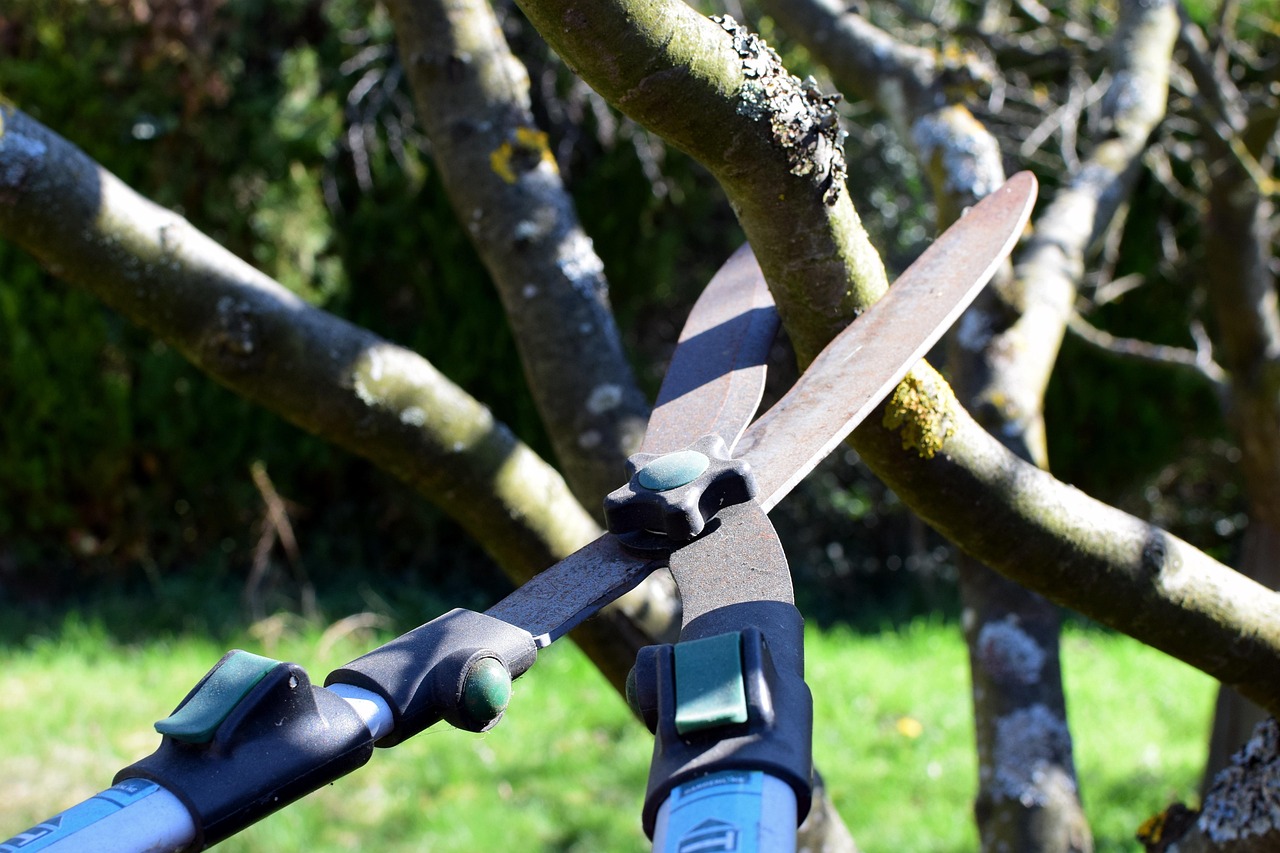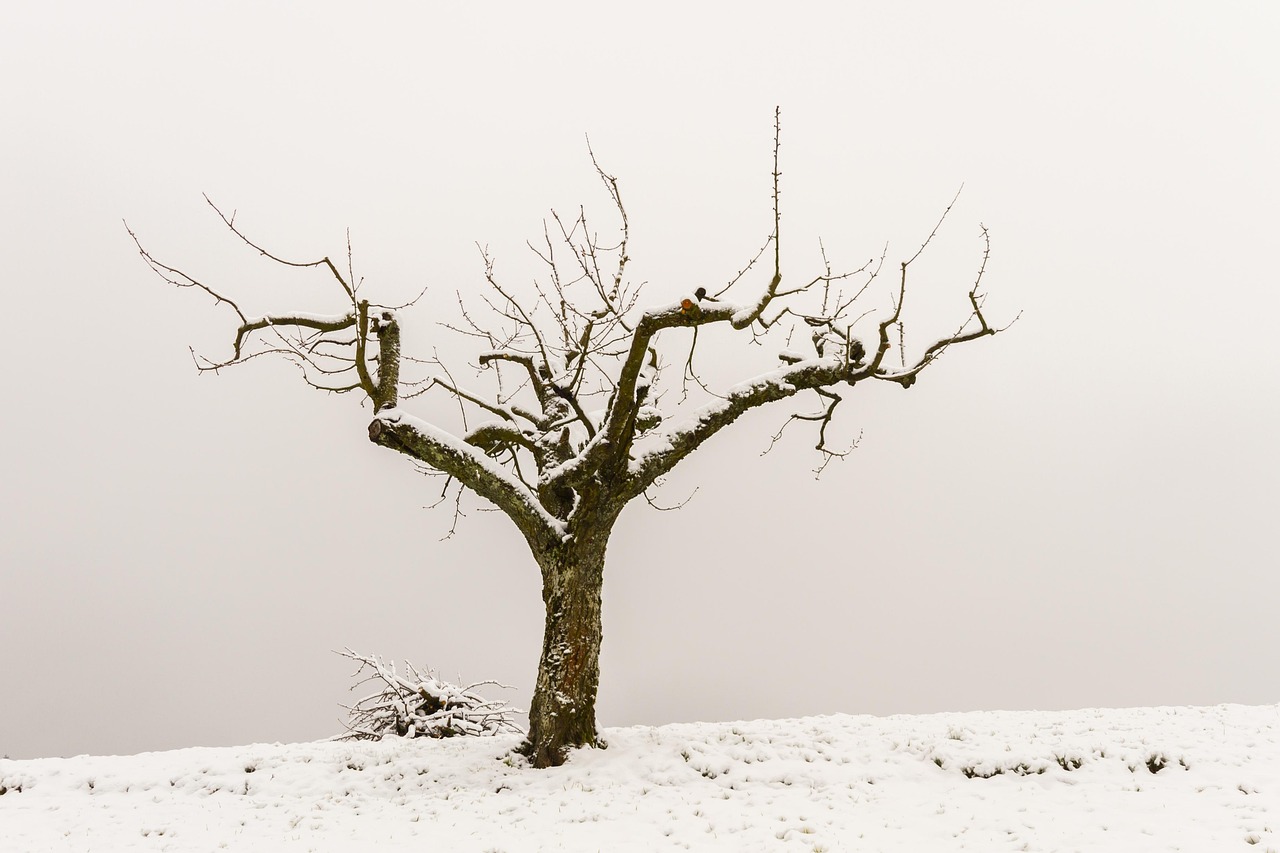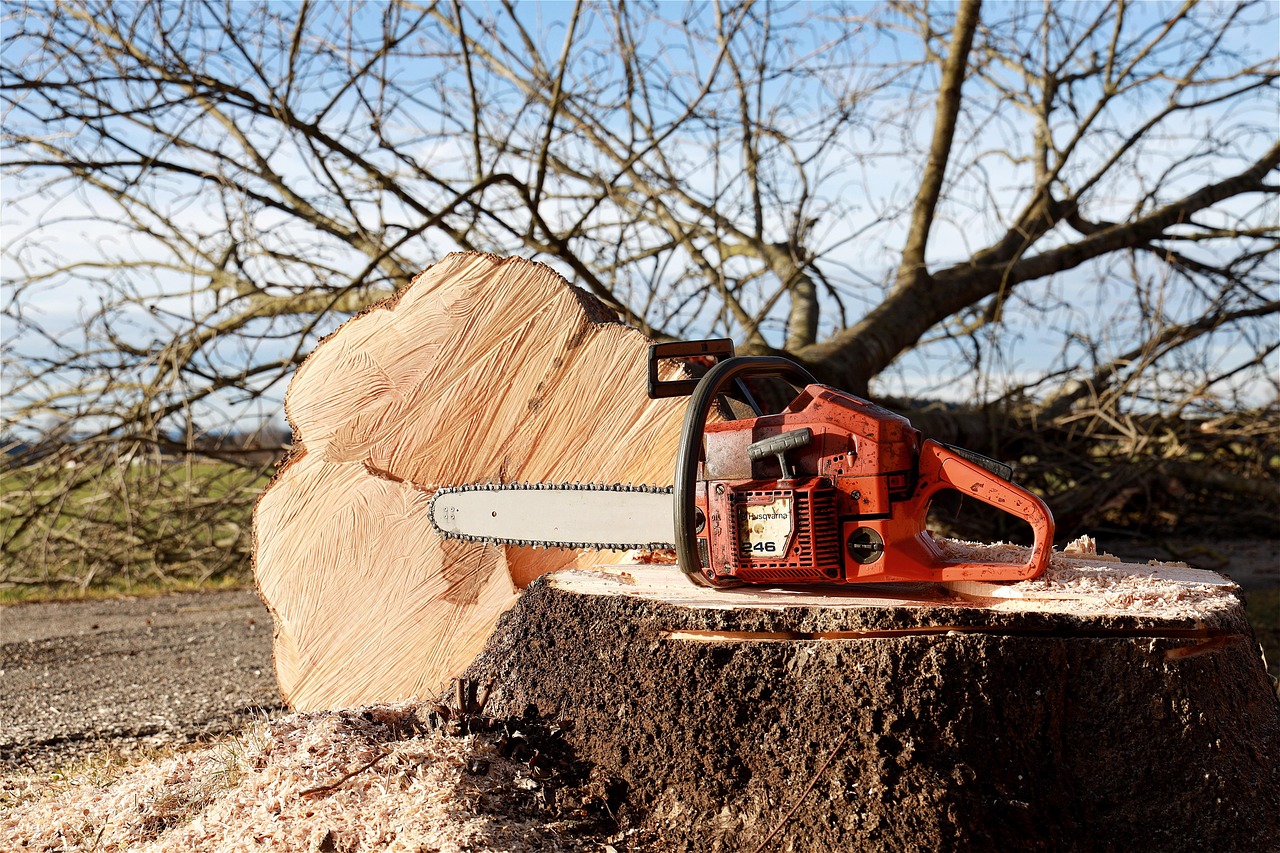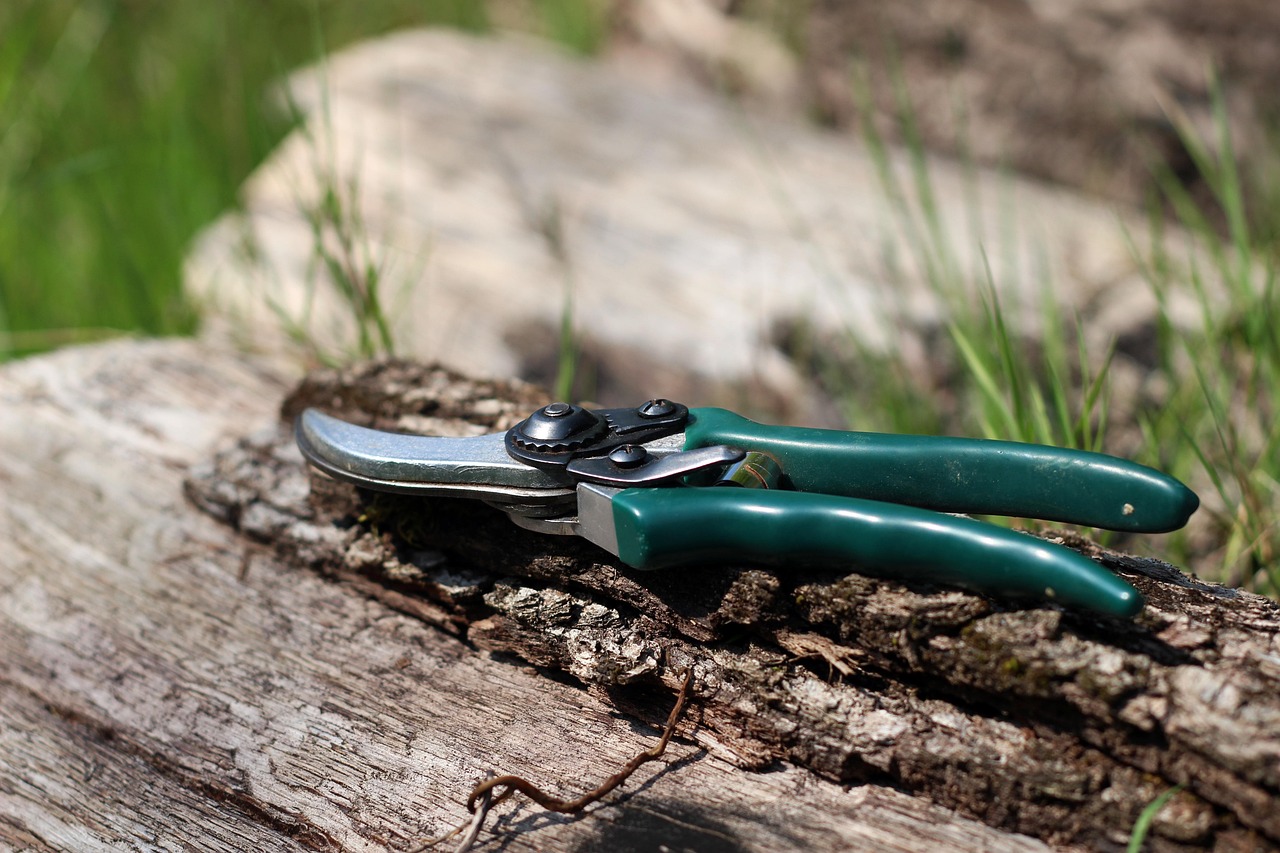Tree pruning is essential for enhancing the aesthetic appeal of landscapes. By selectively removing branches, it encourages healthier growth, shapes the tree for visual balance, and promotes light penetration. Pruning also eliminates dead or diseased wood, improving overall tree health. Regular maintenance fosters a more attractive and well-kept garden, contributing to a harmonious outdoor environment.
Tree pruning enhances the aesthetic appeal of landscapes by improving tree health, shape, and structure. Proper techniques can create visually pleasing designs while ensuring the longevity and vitality of trees.
Tree pruning is an essential practice for maintaining not just the health of the trees but also the overall aesthetics of a landscape design. Whether you are a professional landscaper or a gardening enthusiast, understanding the fundamentals of tree pruning can significantly enhance the beauty of your outdoor space. Through proper pruning techniques, trees can achieve a well-defined shape and flourish in their environment, contributing to a more inviting and harmonious landscape.

Pruning is not merely about cutting branches; it involves understanding tree biology and growth patterns. When carried out correctly, it promotes healthy growth and can even prevent various diseases. Additionally, pruning can help control the size and shape of trees, ensuring they fit well into the design of your landscape. This balance between health and aesthetics is crucial for creating a visually appealing garden or yard.
Understanding Tree Pruning
Tree pruning is an art and science that requires knowledge and skill. It involves removing specific branches or stems to improve tree structure, health, and aesthetics. There are various reasons to prune trees, including:
- Enhancing tree shape and structure
- Removing dead or diseased branches
- Encouraging new growth
- Improving light penetration and air circulation
- Maintaining safety by removing hazardous limbs
Each of these reasons contributes to not only the well-being of the tree but also to the overall beauty of the landscape. For instance, properly pruned trees allow more sunlight to filter through, promoting healthy undergrowth and other plants.

Types of Pruning Techniques
When it comes to tree pruning, there are several techniques that can be employed. Understanding these methods will help you choose the right one based on your landscape needs.
| Pruning Technique | Description | Best For |
|---|---|---|
| Thinning | Removing selected branches to reduce density. | Improving light and air circulation. |
| Heading | Cutting back branches to a bud or lateral branch. | Controlling size and encouraging bushier growth. |
| Reduction | Reducing the size of a tree while maintaining its natural shape. | Larger trees in small spaces. |
| Cleaning | Removing dead, damaged, or diseased branches. | Maintaining tree health. |
Each technique serves a distinct purpose. For example, thinning can open up the canopy, allowing sunlight to reach lower plants. Heading may be ideal for shaping younger trees, while cleaning is crucial for protecting overall tree health.
The Best Time to Prune Trees
Timing plays a significant role in the effectiveness of tree pruning. Pruning at the right time can promote better healing and growth. Generally, the best time to prune trees is during their dormant season, which usually falls in late winter to early spring before new growth begins. However, specific species may have different needs.

Here are some tips for determining when to prune:
- Prune deciduous trees in late winter or early spring.
- Prune flowering trees immediately after they bloom.
- Avoid pruning in late summer or fall as it may encourage new growth that won’t harden off before winter.
Understanding the growth cycle of your trees will help you make informed decisions about when to prune. This awareness will ensure that your landscape remains healthy and aesthetically pleasing throughout the year.
In addition to timing, proper tools are essential for effective pruning. Using sharp, clean tools minimizes damage to the tree and helps prevent the spread of disease. Some common tools include hand pruners, loppers, and saws, each suited for different types of cuts and branch sizes.

Overall, mastering tree pruning techniques can lead to beautiful landscapes that thrive in their environments. By combining knowledge with practical skills, you can enhance not just individual trees but also the entire aesthetic quality of your garden or yard.
Common Mistakes in Tree Pruning
Although tree pruning is essential for maintaining a healthy landscape, certain mistakes can undermine your efforts. Understanding these common pitfalls can help you avoid them and ensure that your trees thrive.
- Improper Timing: Pruning at the wrong time can harm trees. As mentioned earlier, pruning during dormancy is usually best. Cutting during the growing season may lead to excessive sap loss or stress.
- Over-Pruning: Removing too much foliage can shock the tree. It is crucial to prune conservatively, focusing on specific branches that need attention rather than cutting extensively.
- Neglecting Tools: Using dull or dirty tools can damage trees. Always ensure your equipment is sharp and sanitized to prevent infection.
- Ignoring Tree Structure: Failing to consider the natural shape of the tree may result in an unnatural look. Pruning should aim to enhance the tree’s inherent form.
- Leaving Stubs: Cutting branches too close to the trunk or leaving stubs can hinder healing. Always cut back to a bud or lateral branch.
Avoiding these mistakes will not only improve the health of your trees but also contribute to a more attractive landscape overall. Proper education and practice are key components in mastering tree pruning techniques.
Pruning Different Types of Trees
Each type of tree has unique characteristics and requirements regarding pruning. Understanding these differences is vital for effective maintenance. Below are some guidelines for pruning various types of trees.
Deciduous Trees
Deciduous trees, which lose their leaves in the fall, are best pruned during their dormant season. This allows for optimal healing and growth in the spring. Key considerations include:
- Focus on removing dead or crossing branches.
- Encourage an open canopy to allow sunlight to reach lower branches.
- Avoid cutting back more than 25% of the tree’s foliage in a single season.
Evergreen Trees
Evergreens, which retain their leaves year-round, generally require less frequent pruning. However, they still benefit from occasional maintenance:
- Thin out crowded areas to maintain airflow.
- Prune after new growth appears, typically in late spring or early summer.
- Use caution when cutting back as evergreens do not regenerate as quickly as deciduous trees.
Flowering Trees
Flowering trees have specific pruning needs depending on their bloom time. Some bloom on old wood while others flower on new growth:
- Prune spring-blooming varieties immediately after flowering.
- Summer-blooming species can be pruned in late winter or early spring before new growth starts.
- Remove spent flowers to encourage further blooms throughout the season.
The Benefits of Professional Pruning Services
While many homeowners choose to prune their trees themselves, there are significant benefits to hiring professional services. These experts bring knowledge and experience that can make a considerable difference in the outcome of your landscape design.
- Expertise: Professionals understand various tree species and their specific needs, ensuring proper techniques are applied.
- Safety: Pruning large trees can be dangerous. Professionals have the right equipment and safety measures in place to mitigate risks.
- Time-Saving: Hiring professionals frees up your time for other landscaping tasks or personal activities.
- Long-Term Health: Well-pruned trees have better growth patterns and health, leading to a more attractive landscape over time.
Choosing a reputable tree service can provide peace of mind, knowing that your trees are receiving the best care possible. Look for certified arborists who adhere to industry standards and practices.
Integrating Tree Pruning into Landscape Design
Effective landscape design integrates tree pruning into its overall plan. This can enhance not only individual trees but also the entire outdoor space. Here are some strategies to consider:
- Create Focal Points: Use well-pruned trees as focal points in your landscape design. Their shape and structure can draw attention and enhance visual interest.
- Layering: Consider how tree height and shape interact with other plants. Pruning can help control size, allowing for layering of plants that thrive together.
- Sustainability: Healthy trees contribute to a sustainable landscape by providing shade, reducing energy costs, and supporting local wildlife.
- Aesthetics: Regular pruning ensures that trees remain beautiful throughout the seasons, contributing to a cohesive and appealing landscape design.
Incorporating these elements into your landscape design will result in a vibrant and aesthetically pleasing outdoor environment that showcases the beauty of well-maintained trees. Understanding the interplay between tree pruning and landscape design is key to creating harmonious outdoor spaces.
Seasonal Considerations for Tree Pruning
Understanding the seasons can greatly influence the effectiveness of tree pruning. Different times of the year present unique opportunities and challenges for maintaining trees. By tailoring your pruning approach to seasonal changes, you can achieve healthier trees and a more attractive landscape.
Winter Pruning
Winter is often considered the ideal time for pruning many deciduous trees. During this dormant season, trees conserve energy and focus on root development, making them less susceptible to stress from pruning. Key benefits of winter pruning include:
- Visibility: Without leaves, the tree’s structure is more visible, allowing for better decision-making about which branches to remove.
- Reduced Stress: Pruning during dormancy minimizes the stress on the tree and encourages more vigorous growth in the spring.
- Fewer Pests: Many pests and diseases are less active in winter, reducing the risk of infection during pruning.
Spring Pruning
Spring is a crucial time for some tree species, particularly flowering trees. However, it can be a double-edged sword. While it’s an excellent time for light pruning and maintenance, heavy pruning should generally be avoided:
- Timing is Key: Prune early bloomers immediately after flowering to encourage new growth. For late bloomers, wait until after the threat of frost.
- Encourage Growth: Spring pruning can stimulate new growth, but excessive cutting can lead to stress and reduce flowering.
Summer Pruning
Summer pruning can be beneficial for certain types of trees. This timing helps manage growth and shape without affecting the tree’s overall health. Consider these aspects:
- Maintenance: Remove any unwanted growth or dead branches during the growing season to maintain a healthy appearance.
- Control Size: Summer pruning can help control tree size and promote bushier growth.
- Avoid Stress: Do not over-prune during this time, as trees are actively growing and may not recover quickly from significant cuts.
Fall Pruning
Fall is generally not recommended for heavy pruning due to various factors. However, light maintenance can be beneficial:
- Avoiding Frost Damage: Pruning in the fall can stimulate new growth that will not harden before winter, making trees vulnerable to frost damage.
- Light Maintenance: If necessary, perform light pruning to clean up dead or damaged branches without causing stress.
The Role of Tree Species in Pruning Practices
The species of a tree plays a significant role in determining the best pruning techniques. Each species has its own growth patterns and responses to cutting, which must be understood for effective landscape management.
Common Tree Species and Their Needs
Here are some popular tree species and their specific pruning requirements:
| Tree Species | Best Pruning Time | Pruning Considerations |
|---|---|---|
| Maple | Late Winter/Early Spring | Avoid heavy pruning; focus on shaping. |
| Oak | Late Winter | Avoid summer pruning to minimize disease risk. |
| Crape Myrtle | Late Winter/Spring | Aggressive pruning encourages new blooms. |
| Pine | Late Spring/Early Summer | Do not prune heavily; focus on cleaning up dead branches. |
Understanding these specific needs will enhance your ability to maintain the health and beauty of your trees effectively. Always research individual species before initiating pruning to ensure optimal results.
The Impact of Pruning on Tree Health
The relationship between tree pruning and overall health is profound. Proper techniques not only improve aesthetics but also strengthen the tree’s resilience against pests and diseases. Here are some key points on how pruning affects tree health:
- Pest Control: Regularly removing dead or diseased branches prevents pests from taking hold. This proactive approach is critical for maintaining tree vitality.
- Disease Prevention: Pruning allows for better air circulation, reducing moisture retention around branches that can lead to fungal diseases.
- Encouraging Growth: Targeted cuts can stimulate new growth, enabling trees to adapt better to their environments and thrive.
- Drought Resistance: A well-pruned tree has a more balanced canopy, allowing it to conserve water more effectively during dry spells.
A proper understanding of these health benefits will motivate you to approach tree pruning with care and knowledge. Each cut made should serve a purpose that contributes positively to the overall well-being of your trees and landscape.
In addition to enhancing aesthetics, tree pruning is essential for promoting biodiversity within your landscape. A well-maintained tree can support a variety of wildlife, providing habitats for birds, insects, and other organisms. The following points outline how thoughtful pruning practices contribute to a more vibrant ecosystem:
- Habitat Enhancement: Healthy trees offer shelter and nesting sites for various species. Trees with a balanced canopy promote an ecosystem that attracts beneficial wildlife.
- Food Sources: Many trees produce fruits, nuts, and flowers which serve as food for different animals. Proper pruning can enhance flowering and fruiting, increasing food availability.
- Diversity Promotion: A diverse landscape supports a wider range of wildlife. Pruning encourages healthy growth, allowing for the coexistence of various plant species in harmony.
- Pollinator Support: Flowers that bloom due to proper pruning attract pollinators such as bees and butterflies. This interaction is vital for maintaining plant reproduction and health.
Integrating Technology in Tree Pruning
Advancements in technology have made tree pruning more efficient and effective. Tools such as drones and software applications can assist in assessing tree health and planning pruning strategies. Here are some ways technology is influencing tree care:
- Drones: Drones can provide aerial views of tree canopies, helping arborists identify issues such as overcrowding or pest infestations from a new perspective.
- Mobile Apps: There are various applications available that help homeowners track the growth of their trees and set reminders for maintenance tasks including pruning.
- 3D Modeling: Some landscape designers use 3D modeling software to visualize how trees will look after pruning, enabling better planning for aesthetic outcomes.
- Data Analysis: Advanced analysis tools can help predict the growth patterns of trees based on species, environmental conditions, and pruning techniques.
Embracing these technologies not only streamlines the process of tree care but also enhances the quality of the landscape you are maintaining. This integration leads to smarter decisions that benefit both the trees and the surrounding environment.
Financial Benefits of Pruning Trees
While investing in tree pruning may seem like an expense, the long-term financial benefits can be significant. Proper tree care can lead to substantial savings and increased property values:
- Increased Property Value: Well-maintained trees enhance curb appeal, which can boost property value significantly. Landscapes with mature trees are often more desirable to potential buyers.
- Energy Savings: Strategically pruned trees provide shade during hot months, which can lower cooling costs for homes. This energy efficiency translates into cost savings over time.
- Reduced Damage Costs: Regular pruning minimizes the risk of branches falling during storms, which can prevent costly property damage or injuries.
- Lower Maintenance Costs: Healthy trees require less frequent treatment for pests and diseases, resulting in lower maintenance expenses over their lifetime.
In this way, investing time and resources into tree pruning is not just about aesthetics—it can also be a sound financial decision for homeowners and property managers alike.
Final Thoughts
Tree pruning is a cornerstone of effective landscape design that combines art with science. Understanding the principles and techniques of pruning allows you to maintain healthy trees that enhance the beauty and functionality of outdoor spaces. By considering factors such as timing, species-specific needs, and the integration of technology, you can achieve optimal results in your landscape.
The benefits of tree pruning extend beyond aesthetics to include improved tree health, support for biodiversity, and even financial advantages. Whether you are a professional landscaper or a dedicated homeowner, mastering the art of tree pruning will lead to vibrant landscapes that flourish through the seasons.
As you embark on your journey to enhance your landscape through tree pruning, remember that each cut should serve a purpose. Thoughtful practices ensure that your trees thrive while contributing to a beautiful and sustainable environment for all to enjoy.
